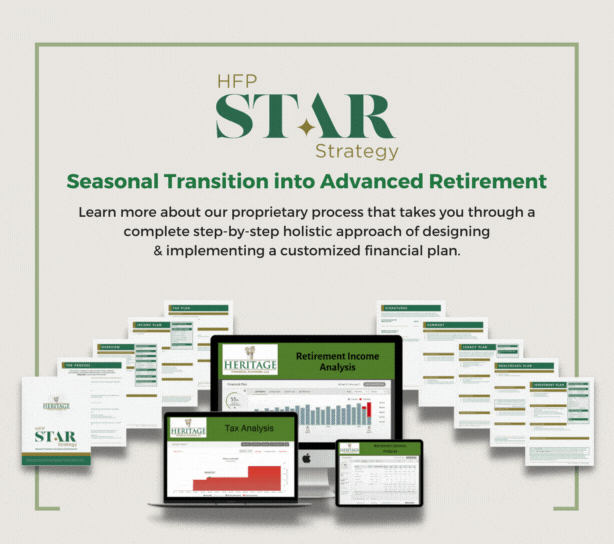New IRS limits aim to encourage adequate planning and boost participation.
The prospect of retirement is a time that many look forward to, envisioning a period of relaxation and enjoyment after years of hard work. However, a recent report from the Congressional Research Service has shed light on a concerning reality: a significant majority of individuals are not saving enough for their retirement.
In fact, according to the report, a mere 8.5% of those contributing to a retirement account managed to reach the maximum allowable limit, indicating a widespread struggle to prepare adequately for the future.
IRS Announces New Contribution Limits
Recognizing the urgency of addressing the retirement savings gap, the Internal Revenue Service has recently announced changes to contribution limits, set to take effect in 2024. The most notable adjustment is the increase in the maximum allowable contribution to 401(k) accounts, with workers now permitted to contribute up to $23,000 annually – a $500 increase from the previous year. This adjustment also extends to other retirement savings vehicles, including the 403(b) plan, most 457 plans, and the federal government’s Thrift Savings Plan.
While these adjustments aim to empower individuals to save more for their retirement, it’s essential to acknowledge that simply increasing contribution limits may not be a panacea.
The root of the issue lies in the widespread failure to maximize existing limits, as evidenced by the low percentage of individuals reaching the previous thresholds.
Catch-Up Contributions
To address the unique challenges older workers face, the IRS has maintained catch-up contribution limits for savers aged 50 and older at $7,500. This provision recognizes the financial hurdles that individuals encounter as they approach retirement age, allowing them to bolster their savings in the later stages of their careers.
Expanding Opportunities with IRAs
The changes introduced by the IRS are not limited to workplace-sponsored retirement plans. Individual Retirement Accounts (IRAs) also see increased contribution limits, with the cap raised to $7,000 for 2024, up from $6,500 in 2022. While this expansion provides more opportunities for individuals to save independently, it’s crucial to note that the catch-up contribution limit for IRAs remains at $1,000.
The catch-up contribution limit for individuals aged 50 and above participating in 401(k), 403(b), most 457 plans, and the federal government’s Thrift Savings Plan has been raised to $7,500, up from $6,500. Consequently, individuals aged 50 and older contributing to 401(k), 403(b), most 457 plans, and the federal government’s Thrift Savings Plan can now contribute up to $30,000, effective from 2023.
Additionally, the catch-up contribution limit for individuals aged 50 and above participating in SIMPLE plans has been increased to $3,500, up from $3,000.
Moreover, the income ranges determining eligibility for deductible contributions to traditional Individual Retirement Arrangements (IRAs), contributions to Roth IRAs, and eligibility for claiming the Saver’s Credit have all seen an increase for the year 2023.
Straight from the IRS
Taxpayers can deduct contributions to a traditional IRA if they meet certain conditions. If during the year either the taxpayer or the taxpayer’s spouse was covered by a retirement plan at work, the deduction may be reduced or phased out until it is eliminated, depending on filing status and income. (If neither the taxpayer nor the spouse is covered by a retirement plan at work, the phase-outs of the deduction do not apply.) Here are the phase‑out ranges for 2023:
-
For single taxpayers covered by a workplace retirement plan, the phase-out range is increased to between $73,000 and $83,000, up from between $68,000 and $78,000.
-
For married couples filing jointly, if the spouse making the IRA contribution is covered by a workplace retirement plan, the phase-out range is increased to between $116,000 and $136,000, up from between $109,000 and $129,000.
-
For an IRA contributor who is not covered by a workplace retirement plan and is married to someone who is covered, the phase-out range is increased to between $218,000 and $228,000, up from between $204,000 and $214,000.
-
For a married individual filing a separate return who is covered by a workplace retirement plan, the phase-out range is not subject to an annual cost-of-living adjustment and remains between $0 and $10,000.
The income phase-out range for taxpayers making contributions to a Roth IRA is increased to between $138,000 and $153,000 for singles and heads of household, up from between $129,000 and $144,000. For married couples filing jointly, the income phase-out range is increased to between $218,000 and $228,000, up from between $204,000 and $214,000. The phase-out range for a married individual filing a separate return who makes contributions to a Roth IRA is not subject to an annual cost-of-living adjustment and remains between $0 and $10,000.
The income limit for the Saver’s Credit (also known as the Retirement Savings Contributions Credit) for low- and moderate-income workers is $73,000 for married couples filing jointly, up from $68,000; $54,750 for heads of household, up from $51,000; and $36,500 for singles and married individuals filing separately, up from $34,000.
The amount individuals can contribute to their SIMPLE retirement accounts is increased to $15,500, up from $14,000.
How Heritage Financial Planning Can Help
As the IRS takes steps to encourage increased retirement savings through adjusted contribution limits, the onus remains on individuals to proactively plan for their financial future. The retirement savings gap is a complex issue that requires a multi-faceted approach, combining policy changes with enhanced financial education and individual responsibility. That’s where Heritage Financial Planning can help.












